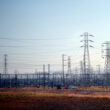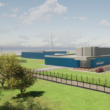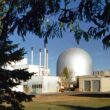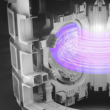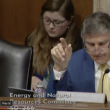Let’s get serious about nuclear waste management
By Alan Hanson, December 22, 2008
A primary driving force behind the Global Nuclear Energy Partnership was to incentivize countries to voluntarily forgo building sensitive fuel-cycle facilities. Hence the twin ideas of a multinational or international fuel bank and cradle-to-grave fuel leasing (including spent-fuel take back). While progress is being made on the concept of a nuclear fuel bank, the same can’t be said for take-back schemes. The main issue with the latter revolves around concerns over nuclear waste disposal. Simply put, if a country can’t effectively manage and dispose of its own nuclear waste, how can it possibly take back and dispose of someone else’s waste?
The issue of waste disposal has been a contentious one in the United States for a long time. Listening to the debate, one might think we have no solution to the problem. But a solution does exist; there’s a worldwide consensus that deep geological disposal is the correct way to deal with these materials. What remains to be decided and implemented is what form the waste will take and where it will be located. The 1982 Nuclear Waste Policy Act, as amended, specified that the first U.S. repository would be located in Yucca Mountain, Nevada.
I don’t want to argue the merits of Yucca Mountain as a repository site. The Energy Department submitted a license application to the Nuclear Regulatory Commission (NRC) for the repository earlier this year, and my long experience with the NRC suggests that it takes its mandate to protect the public health and safety seriously. If it can’t establish with a high degree of certainty that the repository will be safe, it won’t issue it a license.
In my view, at least two legislative mistakes were made with regard to the U.S. waste issue, and they both involve time limits. First, February 1998 was specified for when disposal of nuclear waste was to begin. This date wasn’t met, and because it wasn’t met, many people characterized the repository program as a failure. It’s not a failure. Much scientific and engineering progress has been made. There’s no technical or safety reason that necessitated the 1998 date. We should take our time and get it right. A second mistake was made when the NRC was directed to finish its review and issue a decision in only 3-4 years. Again, what was the rush? The NRC should be allowed, as it is with all other licensing activities, to expend the time needed to arrive at a thoroughly justified decision.
Today we know that it will be many years before Energy actually accepts spent fuel and disposes of it. In the meantime, spent fuel continues to accumulate at reactor sites, and more and more of it is being placed in dry storage. Both Jill Parillo and Miles Pomper have advocated for dry storage. It’s easy to agree with them because it’s the only near-term option. Fortunately, dry storage is a very safe and mature technology; however, it’s not a substitute for actual permanent disposal.
Returning to the subject of waste forms touched on earlier, my personal belief is that vitrified waste free of virtually all plutonium is preferable to unprocessed spent fuel. There are sharp disagreements on this subject, of course, largely centering on the issue of nonproliferation. I find myself in complete agreement with Jill on at least one important factor. If and when it’s decided to reprocess spent fuel, it doesn’t make sense to separate out and segregate the cesium and strontium. She is right to focus on the unusual hazards associated with these materials, particularly cesium. It’s preferable to leave these two materials embedded and diluted in vitrified waste where they aren’t readily dispersible. Because of heat load, this may require near-surface storage for many decades, but this too can be done safely.
It’s clear today that under the best of circumstances it will be a long time before the United States is in a position to take back used fuel from other countries (if it ever happens at all). This doesn’t mean that it’s a bad idea; rather it suggests that there’s another reason to get serious about nuclear waste disposal and forge a politically acceptable approach to get it done. I think we will all agree that the incoming Obama administration must tackle the issue of waste disposal whether or not we experience a nuclear revival.
Topics: Nuclear Energy
Share: [addthis tool="addthis_inline_share_toolbox"]


